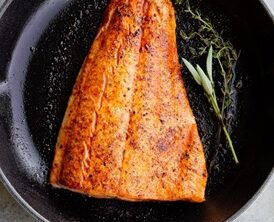Using clay pots for cooking requires some specific steps to ensure the best results and to prevent cracking or damage to the pots. A donabe is the same, it’s a traditional Japanese clay pot that is used for various cooking methods, including simmering, steaming, and hot pot dishes. Here’s a general guide on how to use clay pots or donabe for cooking:

- Seasoning the Clay Pot
- If you have a new clay pot, it’s important to season it before its first use. This helps prevent the pot from cracking during cooking.
- Submerge the pot in water for several hours or overnight. This allows the clay to absorb water and become more resistant to heat.
- After soaking, let the pot air-dry completely before using it.
- Choosing the Right Dish
- Select dishes that benefit from slow and gentle cooking, such as stews, soups, casseroles, and braised meats.
- Avoid recipes that require very high heat or quick cooking times.
- Preparing the Ingredients
- Chop, slice, and prepare the ingredients you plan to cook in the pot. Depending on the recipe, this might include vegetables, meats, seafood, tofu, and noodles.
- Preheating the Pot
- If you’re cooking on a stovetop or open flame, place the pot on the heat source without any ingredients inside.
- Start with low heat and gradually increase the heat to avoid thermal shock, which could cause the pot to crack.
- Adding Ingredients
- Once the pot is preheated, add your ingredients as per your recipe.
- Cooking
- Place the prepared ingredients in the donabe. You can layer them if needed.
- Add broth, sauce, or liquid according to your recipe. Donabes are often used for dishes that involve simmering or steaming.
- Place the donabe on the stove or another heat source. Use a heat diffuser if you’re cooking on a gas stove to distribute the heat evenly and prevent direct flame contact.
- Start with low heat and gradually increase it to avoid thermal shock and potential cracking. Don’t expose the donabe to sudden temperature changes.
- Stir the ingredients occasionally to prevent sticking and ensure even cooking.
- Lid Usage
- Use the lid to cover the pot during cooking. The lid helps retain moisture and create a steamy environment, which enhances the flavors and textures of the food.
- Monitoring Cooking Times
- Cooking times in clay pots might be longer compared to other cookware due to their slow cooking properties. Be patient and monitor the progress.
- Avoiding Sudden Temperature Changes
- When adjusting the heat or moving the pot, do so gradually to avoid rapid temperature changes that could cause cracking.
- Serving
- Once your dish is cooked, carefully remove the pot from the heat source.
- You can serve the dish directly from the clay pot, as it can add a rustic touch to your presentation.
- Cleaning and Maintenance
- Allow the clay pot or donabe to cool down before cleaning.
- Hand-wash the pot using mild detergent and warm water. Avoid using abrasive scrubbers that could damage the pot’s surface.
- Make sure the pot is completely dry before storing it to prevent mold or moisture-related issues.
- Storing the Clay Pot
- Store the clay pot or donabe in a dry and cool place to prevent any potential moisture-related problems.
Remember that different clay pots or donabe might have specific care instructions, so it’s a good idea to refer to any manufacturer recommendations that come with your specific pot. With proper care and attention, using clay pots can be a rewarding way to enhance your cooking and enjoy delicious, flavorful meals.


